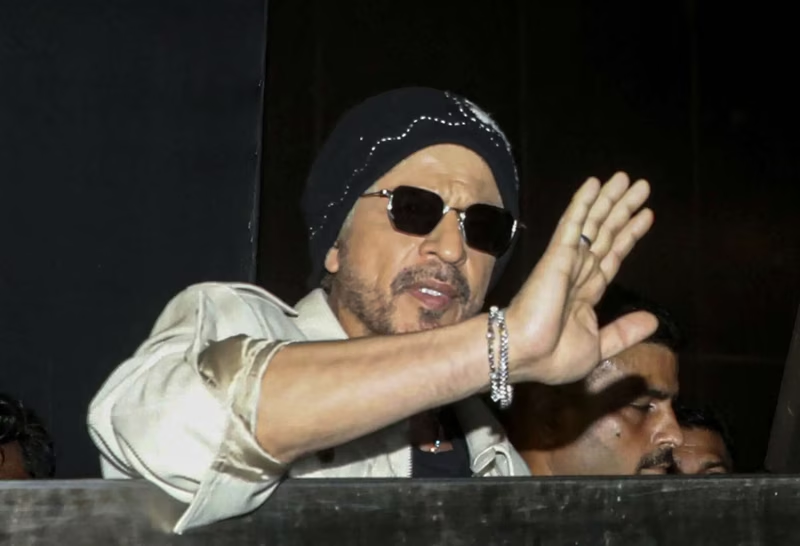Table of Contents
- A Career on the Brink
- Cheteshwar Pujara and the 2009 Accident
- SRK’s Human Touch: The KKR Intervention
- The Road to Recovery and Test Glory
- Why This Matters for Indian Cricket
- IPL Franchises as Career Lifelines
- Conclusion
- Sources
Before he became India’s “Wall” in overseas Tests, before his marathon 204 in Sydney or his gritty 135 in Johannesburg, Cheteshwar Pujara faced a moment that could have ended it all. In 2009, during a routine Kolkata Knight Riders (KKR) practice match, Pujara suffered a career-threatening ACL (anterior cruciate ligament) tear—a devastating injury for any athlete, let alone a 21-year-old with dreams of Test cricket. What happened next wasn’t just medical care—it was an act of extraordinary humanity. And it came from an unlikely source: Bollywood superstar and KKR co-owner Shah Rukh Khan.
A Career on the Brink
ACL tears in the late 2000s were often career-altering, especially in India, where access to world-class reconstructive surgery and rehabilitation was limited and expensive. Many promising players faded into obscurity after such injuries due to financial or logistical barriers.
Pujara, then a domestic standout but yet to debut for India, was in a perilous position. His family lacked the resources for advanced treatment abroad. Without proper intervention, his cricketing future—and with it, India’s potential Test mainstay—was in serious jeopardy.
Cheteshwar Pujara and the 2009 Accident
The injury occurred during a fielding drill at a KKR intra-squad game. Pujara twisted his knee awkwardly while attempting a dive, immediately collapsing in pain. Scans confirmed a complete ACL rupture—an injury requiring immediate surgical reconstruction followed by 9–12 months of intensive rehab.
At the time, Pujara was signed with KKR as a domestic player but hadn’t featured in the IPL. His value to the franchise was minimal in commercial terms. Yet, instead of sidelining him, KKR did something unprecedented.
SRK’s Human Touch: The KKR Intervention
Upon hearing the diagnosis, Shah Rukh Khan personally stepped in. Understanding the gravity of the situation, he directed the KKR management to ensure Pujara received the best possible care—regardless of cost. The decision? Fly him to Cape Town, South Africa, for surgery under the care of one of the world’s leading sports orthopedic surgeons .
But KKR’s support didn’t stop at the operation:
- They covered all medical expenses, estimated at over ₹30 lakhs (a massive sum in 2009).
- They arranged for Pujara’s father, Arvind Pujara, to accompany him to South Africa.
- They provided full logistical and accommodation support for the entire recovery period.
- They kept him on the KKR payroll during rehabilitation so he could focus solely on healing.
“SRK sir didn’t see me as just a player—he saw me as a person with a dream,” Pujara later reflected in a private interview . This level of player welfare was virtually unheard of in Indian cricket at the time, especially from an IPL franchise.
The Road to Recovery and Test Glory
Pujara’s recovery was grueling, but the world-class surgery and uninterrupted rehab gave him a fighting chance. He returned to domestic cricket in late 2010, scoring heavily for Saurashtra. His resilience and technique caught the national selectors’ eyes, and he made his Test debut against Australia in October 2010—just 18 months after the injury.
What followed was one of Indian cricket’s most storied Test careers: 10,000+ first-class runs, 19 Test centuries, and legendary performances in Australia, England, and South Africa. None of it would have been possible without that critical intervention in 2009.
Why This Matters for Indian Cricket
This story transcends one player’s comeback. It highlights a crucial truth: behind every great athlete is often an unseen support system. In Pujara’s case, that system was Shah Rukh Khan’s empathy and KKR’s institutional compassion.
Today, with centralized contracts and better medical infrastructure under the BCCI, such crises are less common. But in 2009, this act likely saved not just a career, but India’s batting spine for a decade. Imagine Indian cricket in the 2010s without Pujara anchoring the middle order—it’s a stark alternate reality.
IPL Franchises as Career Lifelines
The KKR-Pujara episode set a quiet precedent. While the IPL is often criticized for prioritizing glamour over grassroots development, this moment showed its potential for profound human impact.
Modern franchises like Chennai Super Kings (with their player wellness programs) and Rajasthan Royals (investing in rural talent) have since built on this legacy. But KKR’s 2009 decision remains one of the most selfless acts in IPL history—a reminder that cricket is, at its heart, a human game.
As ESPNcricinfo notes, “Franchise cricket can be transactional. But in Pujara’s case, it was transformational” .
Conclusion
Cheteshwar Pujara’s Test legacy is etched in stone. But behind those centuries and gritty knocks lies a lesser-known story of compassion that changed everything. Shah Rukh Khan and KKR didn’t just save a player—they preserved a pillar of Indian cricket. In an era where sports are increasingly commercialized, this revelation is a powerful reminder that sometimes, the greatest victories aren’t on the scoreboard, but in the choices we make off it.
